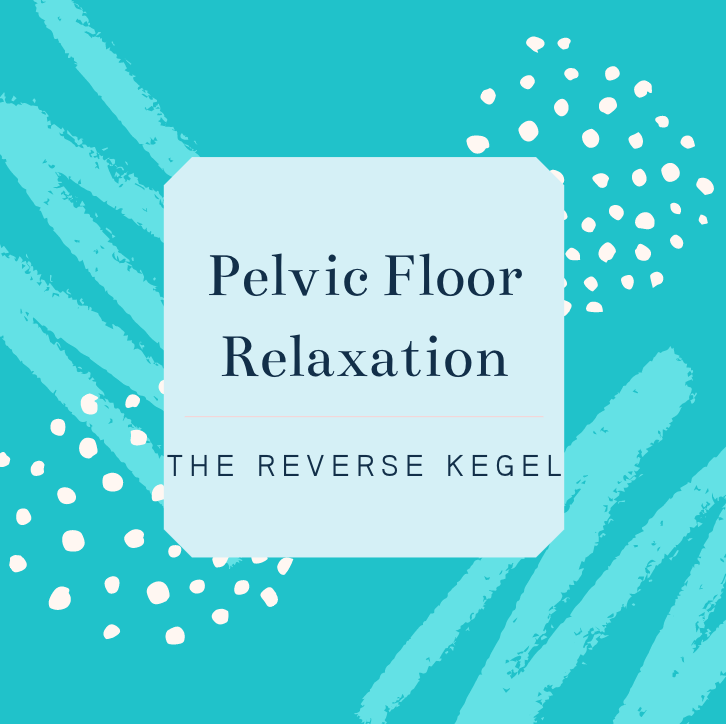Understanding and prioritizing pelvic floor relaxation is fundamental to maintaining overall muscle health. The pelvic floor’s unique ability to lengthen and relax plays a crucial role in various bodily functions, including urination, bowel movements, childbirth, and sexual arousal. In this blog, we’ll explore the significance of pelvic floor relaxation and provide insights into its benefits, signs that indicate its necessity, and practical exercises to achieve it.
The Importance of Pelvic Floor Relaxation
The pelvic floor, a group of muscles supporting the pelvic organs, must efficiently relax to facilitate the opening of the urethra, rectum, and, when applicable, the vagina. Ensuring proper relaxation is essential for a range of functions, from everyday bodily processes to key life events.
Activities requiring pelvic floor relaxation include:
- Urinating
- The pelvic floor should relax to allow for a smooth flow during urination. Proper relaxation promotes healthy bladder function, preventing issues such as incomplete voiding or hesitancy.
- Having a Bowel Movement
- Proper relaxation aids in a comfortable and efficient bowel movement. Tension in the pelvic floor can contribute to constipation or difficulty with bowel movements.
- Delivering a Baby Vaginally
- Pelvic floor relaxation is crucial during childbirth to facilitate the birthing process. Learning to relax the pelvic floor can be a valuable component of prenatal education.
- Sexual Arousal
- Relaxation of the pelvic floor is a natural response during sexual arousal, contributing to a positive sexual experience. Incorporating pelvic floor relaxation exercises can enhance intimacy and reduce discomfort.
Signs Indicating the Need for Pelvic Floor Relaxation
Several signs or symptoms may suggest the need to practice specific pelvic floor relaxation exercises for better health and well-being. These include:
- Constipation: Persistent difficulty with bowel movements may indicate tension in the pelvic floor, necessitating relaxation exercises to alleviate the issue.
- Pelvic Pain: Chronic pelvic pain can often be linked to muscular tension, emphasizing the importance of targeted relaxation techniques.
- Discomfort with Tampon Use or Gynecological Exams: Tension during these activities may signify the need for pelvic floor relaxation, enhancing overall comfort and well-being.
- Pain During Intercourse: Pelvic floor relaxation exercises can play a pivotal role in reducing discomfort and pain during sexual activity.
- Rectal Pain: Pelvic floor relaxation techniques can alleviate tension contributing to rectal pain.
- Urinary Frequency/Urgency: Frequent urges to urinate may be associated with pelvic floor dysfunction, making relaxation exercises a beneficial addition to management strategies.
Additional Reasons to Practice Pelvic Floor Relaxation
- Preparing for Labor and Delivery
- Learning to relax the pelvic floor can enhance the body’s adaptability during labor, potentially reducing stress and discomfort.
- Promoting General Body Awareness
- Pelvic floor relaxation exercises foster a mind-body connection, promoting overall physical and mental health.
- Post-Run or Endurance Workout
- Incorporating pelvic floor relaxation into post-workout routines can aid muscle recovery and reduce the risk of overuse injuries.
- Stress Management
- Pelvic floor relaxation exercises are an accessible and effective stress management tool, contributing to overall mental well-being.
- Pelvic Heaviness
- Targeted relaxation techniques can provide relief in cases where traditional strengthening exercises like Kegels may not be sufficient.
Practical Techniques for Pelvic Floor Relaxation
- Vocalization
- Practice low-pitch sounds like “HAAA,” “OHMM,” or “HUUMM” to encourage relaxation. Vocalization engages the diaphragm and pelvic floor, promoting a coordinated and effective relaxation response.
- Tension Release
- Relax the jaw consciously, as tension in the jaw can correlate with pelvic floor tension. A relaxed jaw can signal to the pelvic floor muscles that it’s safe to release tension.
- Breathing Techniques
- Inhale deeply, allowing ribs and abdomen to expand while envisioning the pelvic floor gently moving away from the body. Deep diaphragmatic breathing promotes relaxation by engaging the parasympathetic nervous system.
- Balloon Imagery
- Visualize a balloon in the pelvis expanding and descending with each inhalation. This imagery provides a tangible focus, enhancing the mind’s connection to the physical sensation of pelvic floor relaxation.
Pelvic Floor Relaxation Exercises
- Deep Squat
- Engage in a deep squat to stretch and relax the pelvic floor. This position allows for a gentle opening of the pelvic outlet, promoting relaxation and flexibility.
- Happy Baby Pose
- Practice the happy baby yoga pose to release tension in the pelvic area. This pose stretches the inner thighs and relaxes the pelvic floor, fostering a sense of openness and ease.
- Lying Down with Knees Bent
- Lie on your back with feet flat on the floor, knees bent and knocked in. Allow thighs to gently press into your hands without moving. This position provides a passive stretch, encouraging the pelvic floor to release tension.
- Child’s Pose
- Adopt the child’s pose to stretch and relax the pelvic floor. This yoga pose promotes gentle elongation of the pelvic floor muscles, offering relief and relaxation.
Consistency is key when practicing these exercises. Spend 2-5 minutes in each position, focusing on your breathing and identifying the most relaxed sensations around the vaginal opening or anus.
Prioritizing pelvic floor relaxation is a simple yet powerful way to enhance overall well-being. Whether addressing specific symptoms or incorporating relaxation into your daily routine, the benefits are far-reaching.
At Mend Colorado, we specialize in Boulder and Lafayette physical therapy, offering personalized guidance to optimize your pelvic health. Take the first step toward a healthier, more relaxed pelvic floor, and let us help you unlock the potential for improved overall wellness. Our team is dedicated to providing personalized care tailored to your needs. To make an appointment for physical therapy in Boulder or Lafayette, reach out online!

